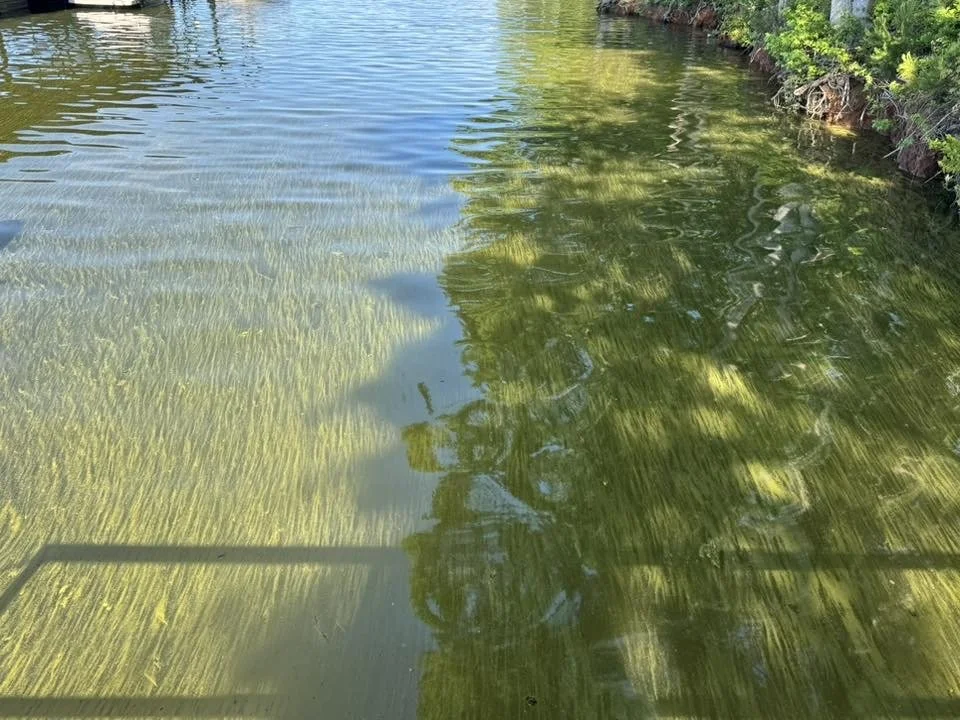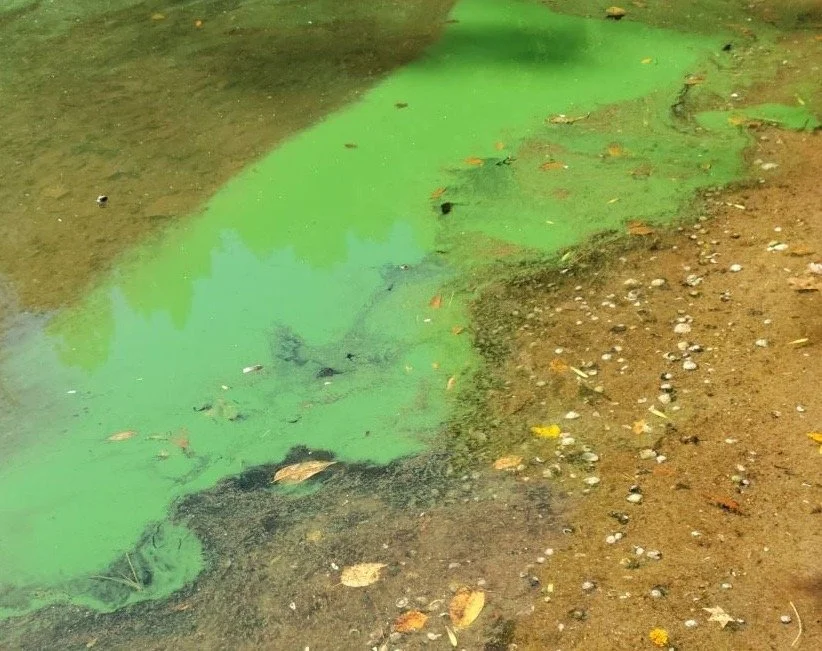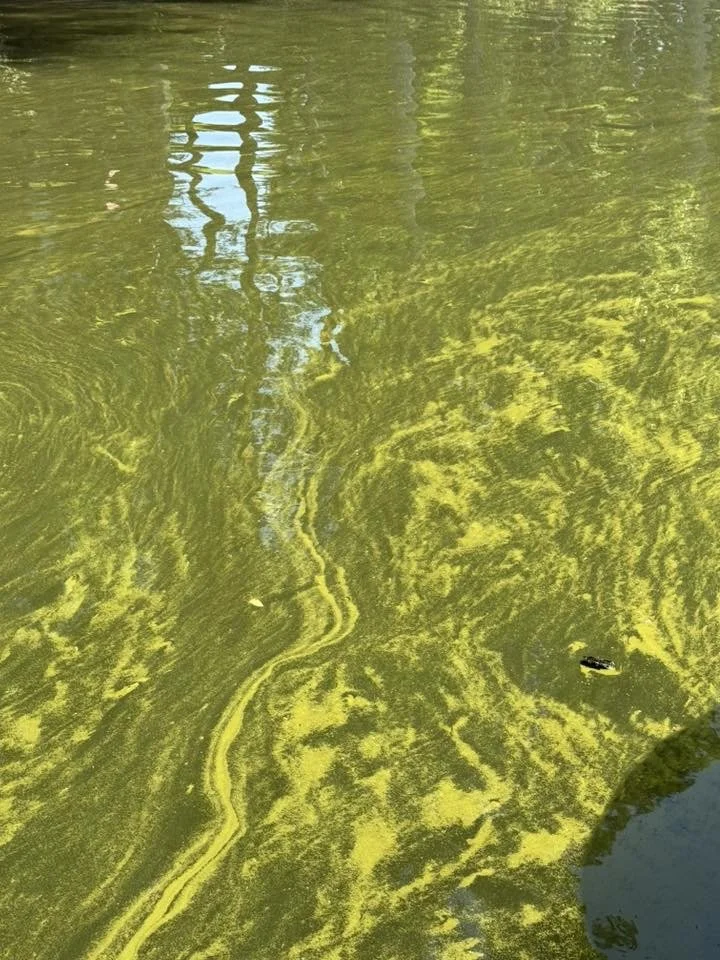Protecting Lake Hartwell: Issues & Answers
This page is your go-to resource for understanding the challenges facing Lake Hartwell and the actions we can take to protect its health. Here, you’ll find research studies, news articles, and educational resources covering topics like water quality, invasive species, shoreline management, and more. Browse by topic or scroll through the latest posts to learn about current concerns and proven solutions. Together, we can ensure Lake Hartwell remains a clean, vibrant resource for generations to come.
ABOUT CYANOBACTERIA IN OUR LOCAL WATERS
Author: Heather Nix (Clemson Cooperative Extension Service)
In the summer of 2025, you may have seen headlines warning about “toxic algae” or “harmful algal blooms” (HABs) in Lake Hartwell. These terms refer to the overgrowth of cyanobacteria, microscopic organisms naturally found in many waterbodies. Under the right conditions, these bacteria can multiply rapidly and sometimes produce toxins that can harm people, pets, and livestock.
THINGS TO KNOW:
· Cyanobacteria thrive in warm, sunny, and nutrient-rich waters, making them more common in ponds, coves, and lakes.
· Cyanobacteria can take on many appearances, such as a bright green paint spill on the water’s surface, pea soup, grass clippings, or a scummy, foamy layer, especially near its edges.
· Be cautious! If you see these types of algae, avoid making contact and alert the SC Department of Environmental Services (SCDES). You can email SCDES photo and location information at hab@des.sc.gov.
WHAT CAUSES THESE BLOOMS?
Cyanobacteria thrive in warm, sunny, and nutrient-richwaters, which means that they are most common in ponds, coves, and lakes where the water is slow-moving and where nutrients, especially phosphorus and nitrogen, are more likely to build up. You are less likely to find HABs in fast-moving streams and rivers, though they are not immune, especially when water levels are low.
Not all blooms are toxic, and you won’t be able to determine this just by looking at the bloom. That’s why experts recommend a cautious approach: if it looks suspicious, stay out of the water and keep pets and livestock away.
WHO MONITORS FOR CYANOBACTERIA?
SCDES regularly monitors lakes across the state where the public has access for swimming or recreation. They sample for cyanobacteria and test for toxins, posting recreational advisories when needed.
SCDES maintains an interactive online map that shows where samples have been collected, what the results are, and whether there are any current warnings.
WHAT ABOUT PRIVATE PONDS OR SMALLER LAKES?
Smaller waterbodies, like farm ponds or neighborhood lakes, are not routinely monitored by the state. If you suspect a bloom in a privately-owned pond, take precautions:
Keep people, pets (especially dogs), and livestock away from the water.
Do not drink, swim in, or fish in water that may be affected.
Submit a sample for identification through Clemson University’s Plant & Pest Diagnostic Clinic. Detailed instructions are available at bit.ly/AlgaeSample. The cost for SC residents is $20 per sample. Visit the website for instructions and more fact sheets regarding algae growth and concerns.
When collecting a sample, use waterproof gloves and avoid breathing in mist or spray from the water to protect yourself from potential exposure to cyanotoxins, which can be airborne.
WHAT CAN WE DO TO PROTECT OURSELVES AND THE LAKE?
As a community, our collective actions make a BIG difference!
1. BUFFER IT! If you live along a lake, pond, or stream, allow a natural no-mow zone or grassy buffer to absorb nutrients and sediment that may run off your property and pollute waterways. Learn more here. (https://hgic.clemson.edu/benefits-of-riparian-buffers-along-waterways/)
2. TEST IT! Before adding fertilizer, know what your lawn, garden, and property need. Soil tests are inexpensive and can be received at any county Clemson Extension Service office. Results will tell you just how much fertilizer and pH adjustments are needed for your yard. Take the next steps from here. (https://www.clemson.edu/public/regulatory/ag-srvc-lab/soil-testing/)
3. PUMP IT! If you own a septic system, make sure it’s maintained. Septic leachate that gets in waterways threaten our recreational safety. Be septic aware and pump your septic system as needed or at least every five years. More information can be found here. (https://www.clemson.edu/extension/water/resources/be-septic-safe.html)
4. GO NATIVE! Native plants are better adjusted to our SC climate. When you select native plants, you create a yard that requires less maintenance overall, and that includes fertilizing. Get started here. (https://www.clemson.edu/extension/carolinayards/index.html)
5. PLANT IT! Too much sediment in waterways can lead to HABs and other water quality issues, especially affecting fisheries. Where you have erosion occurring, plant it, cover it, and raise your mower deck to try to minimize soil leaving your property.
Guidance on ground covers can be found here (https://hgic.clemson.edu/factsheet/groundcovers/). If you are concerned about your streambanks eroding, contact LHPCW by email at info@lakehartwellpcw.com.
Many of the solutions here are natural and ultimately will lower household costs. Working together, we can ensure a healthier Lake Hartwell for today and tomorrow.
ADDITIONAL RESOURCES:
Photo Credits: Anaston Porter, Clemson Extension @2025
Photo Credits: Heather Nix, Clemson Extension @2025
Photo Credits: Heather Nix, Clemson Extension @2025
Photo Credits: Anaston Porter, Clemson Extension @2025






